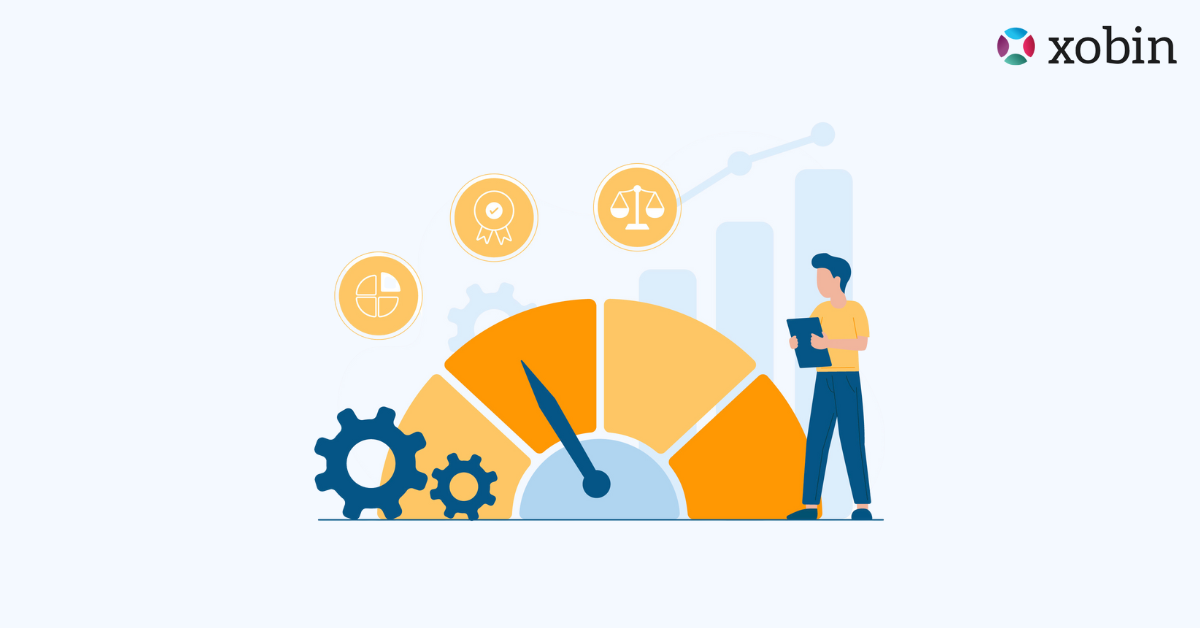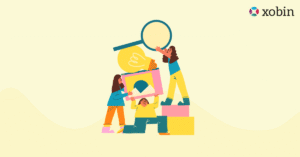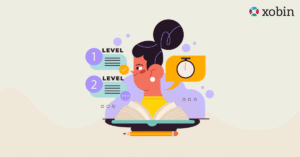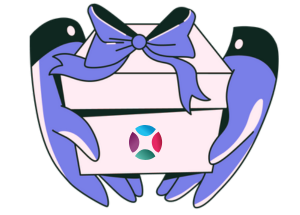The corporate landscape of 2025 is defined by rapid digital transformation, global talent competition, and evolving skill requirements. Organizations cannot rely on traditional hiring metrics such as resumes or tenure alone. Instead, skill benchmarking has emerged as a strategic approach for HR teams to evaluate, develop, and optimize workforce capabilities.
Table of Contents
This comprehensive guide delves into what candidate skill benchmarking is, its significance for HR teams, and how it can be effectively implemented to enhance hiring and talent development processes.
TL;DR – Key Takeaways!
- Skill benchmarking evaluates employee or candidate skills against standards to identify gaps and improve performance.
- Helps optimize hiring, enhance workforce planning, and guide employee training.
- Key components are competency benchmarking, skills gap analysis, employee skills assessment, internal mobility, and continuous performance management.
- Essential skill Benchmarking metrics are time to competency, training effectiveness, performance improvement, internal mobility rates, and retention rates.
- Top candidate skill benchmarking tools are Xobin, Codility, TestGorilla, HackerRank, and iMocha.
- Benefits include data-driven hiring, personalized development plans, higher engagement, and better workforce planning.
- Future trends of skill benchmarking are AI-powered HR tools, generative AI in recruitment, real-time skill tracking, and personalized upskilling strategies.
What is Skill Benchmarking?
Skill benchmarking is the process of evaluating and comparing an individual’s or organization’s skills against established standards or industry norms. This practice allows HR teams to assess whether employees possess the required competencies for their roles and identify areas for development.
Key Components of skill benchmarking:
- Competency Benchmarking: Involves measuring specific skills and knowledge areas against predefined standards.
- Skills Gap Analysis: Identifies discrepancies between current employee skills and those needed for future roles or organizational goals.
- Employee Skill Assessment: Utilizes various tools and methods to evaluate the proficiency levels of employees in different skill areas.
- Benchmarking Employee Performance: Measures productivity and capability levels against internal or external standards.
- Internal Mobility and Skills Mapping: Matches employees with roles that leverage their existing skills while identifying potential growth areas.
- Continuous Performance Management: Tracks skills development over time for ongoing improvement and workforce readiness.
Why Skill Benchmarking Matters for HR Teams
Optimize Talent Acquisition
Using skills assessment tools, HR teams can identify candidates who truly fit role requirements, reducing time-to-hire and recruitment errors.
Enhance Workforce Planning
Competency benchmarking shows current capabilities and compares them with the skills needed for future initiatives.
Improve Employee Development
Skill Benchmarking informs target effectiveness of employee training and development programs to close skill gaps.
Enable Internal Mobility
Internal mobility and skills mapping ensure employees are placed in roles that match their skills, boosting retention and engagement.
Support Strategic HR Decisions
By integrating HR analytics and benchmarking, leaders can make data-driven decisions on promotions, succession planning, and workforce allocation.
Creating a Skill Benchmarking Framework
A practical framework is essential for skill benchmarking to deliver meaningful insights. Here’s a detailed step-by-step approach:
Define Organizational Objectives
Clearly articulate business goals and align benchmarking efforts accordingly. For example, if digital transformation is a priority, focus on skills such as AI literacy, data analytics, or digital collaboration. Skills gap analysis can help pinpoint the competencies critical for achieving strategic objectives.
Identify Key Roles and Competencies
Map out the roles that are vital to your organization and identify the key competencies required for each. This ensures the employee skill assessment targets the skills that matter most to business success. Include both technical and soft skills to achieve a holistic evaluation.
Select Benchmarking Metrics
To evaluate skills effectively, HR teams should select metrics such as
- Time to Competency: How quickly an employee reaches a required skill level.
- Performance Improvement: Gains achieved post-training.
- Training Effectiveness: Impact of development programs on skills acquisition.
- Retention and Internal Mobility Rates: How skills alignment influences career progression.
These metrics provide a quantifiable way to monitor workforce capabilities and measure ROI on development programs.
Collect and Analyze Data
Leverage AI-powered assessment tools for real-world skill simulations, competency assessments, and automated analysis. Data collection should include:
- Online assessments
- Peer evaluations
- Performance reviews
- Skills inventory
Analyzing this data allows HR teams to identify strengths, weaknesses, and critical skill gaps for both current employees and potential hires.
Implement Development Plans
Once gaps are identified, HR can design targeted employee training programs and employee upskilling strategies. For example, technical upskilling for software teams or leadership development programs for managers. Integration of continuous performance management ensures progress is tracked over time.
Monitor and Review
Regularly reviewing talent benchmarks ensures alignment with changing business needs. Metrics and analytics should be updated periodically to account for market changes, new technologies, and emerging skill requirements. Advanced tools like Xobin’s AI analytics help HR leaders monitor trends, track improvements, and predict future skill requirements.
Mistakes to Avoid in Skill Benchmarking
While implementing skill benchmarking, HR teams should be mindful of common pitfalls:
Lack of Clear Objectives
Without clear goals, benchmarking efforts can become disjointed and fail to deliver actionable insights.
Overlooking Soft Skills
Focusing solely on technical competencies can neglect the importance of interpersonal and leadership skills.
Infrequent Assessments
Conducting benchmarking assessments sporadically can lead to outdated data and missed opportunities for improvement.
Ignoring Continuous Learning
Organizations should continually benchmark skills, rather than treating it as a one-time task, to keep up with evolving requirements.
Lack of Stakeholder Involvement
Excluding managers and employees from the benchmarking process can lead to misaligned expectations and goals.
Inadequate Benchmark Selection
Using outdated or irrelevant benchmarks can result in inaccurate assessments and misguided development efforts.
Skill Benchmarking Metrics Every HR Should Track
To effectively monitor and evaluate candidate skill benchmarking efforts, HR can evaluate how effectively they assess employee skills and drive workforce development using these skill benchmarking metrics:
- Skill Proficiency Levels: Assess the current proficiency levels of employees in key skills.
- Training Effectiveness: Evaluates ROI of employee training programs.
- Internal Mobility Rates: Monitors success of internal mobility and skills mapping initiatives.
- Time to Competency: Measures speed at which employees acquire necessary skills.
- Skills Utilization: Determine how effectively employees are applying their skills in their roles.
- Retention Rates: Analyze the correlation between skill development opportunities and employee retention.
- Performance Improvement: Tracks benchmarking employee performance over time.
Top 5 Tools for Skill Benchmarking in Hiring
In 2025, several tools can assist HR teams in implementing effective skill benchmarking:
- Xobin: An AI-powered talent assessment platform that offers customizable skill-based assessments, enabling HR teams to evaluate candidates’ skills accurately and efficiently.
- Codility: A platform specializing in coding assessments, ideal for evaluating technical skills in software development roles.
- TestGorilla: Provides a wide range of pre-employment tests, including cognitive ability and personality assessments, to evaluate candidate suitability.
- HackerRank: Provides coding challenges and competitions to assess the programming skills of candidates.
- iMocha: Features AI-powered assessments across technical, cognitive, and business domains, facilitating comprehensive skill evaluations.
How Leading Companies Use Skill Benchmarking to Hire Better Talent
Leading organizations are leveraging employee skill benchmarking to refine their hiring processes:
Data-Driven Decision Making
By comparing candidate skills against benchmarks, companies can make informed hiring decisions, reducing biases and improving fit.
Personalized Development Plans
Identifying skill gaps allows for tailored training and development programs, enhancing employee growth and performance.
Enhanced Employee Engagement
Providing opportunities for skill development fosters a culture of continuous learning, leading to higher employee satisfaction and retention.
Strategic Workforce Planning
Understanding current skill levels and future needs enables organizations to plan for succession and internal mobility effectively.
The Future of Skill Benchmarking in 2025 and Beyond
By 2025, skill benchmarking will increasingly rely on AI-powered HR software and AI in recruitment. Predictive analytics will allow HR teams to anticipate skill needs, forecast talent shortages, and plan upskilling strategies proactively.
HR leaders should consider the following trends:
- Integration with HR Analytics: Combining benchmarking with data-driven insights for smarter workforce planning.
- Real-time Skill Tracking: Continuous performance evaluation using AI to update skills profiles dynamically.
- Personalized Development Plans: Tailoring Employee Training to individual needs.
- Enhanced Internal Mobility: Aligning employee aspirations with organizational objectives using internal mobility and skills mapping.
Organizations that adopt these innovations will remain agile, competitive, and ready for evolving workforce demands.
Transform Your Workforce with Skill Benchmarking
Investing in skill benchmarking empowers HR teams to make smarter hiring decisions, close skill gaps, and accelerate employee growth. By leveraging AI-powered tools, organizations can assess skills accurately, implement targeted upskilling strategies, and optimize talent mapping.
Start building a more skilled, agile, and future-ready workforce today. Book a personalized demo and begin your skill benchmarking journey with Xobin now to transform how your organization hires, develops, and retains top talent.
FAQs
1. What is candidate skill benchmarking?
Skill benchmarking evaluates and compares employee or candidate skills against set standards, helping identify gaps and boost overall performance.
2. Why is skill benchmarking important for HR teams?
It helps optimize hiring, guide employee training, enhance workforce planning, and improve retention by ensuring employees have the right skills.
3. How do HR teams measure skill gaps?
HR teams use skills assessments, competency evaluations, and performance metrics to identify discrepancies between current and required skills.
4. Which tools are best for skill benchmarking?
Top tools include Xobin, Codility, TestGorilla, HackerRank, and iMocha for evaluating technical and soft skills efficiently.
5. How does skill benchmarking support employee development?
It identifies areas for improvement, enabling personalized employee training, upskilling strategies, and better internal mobility opportunities.






